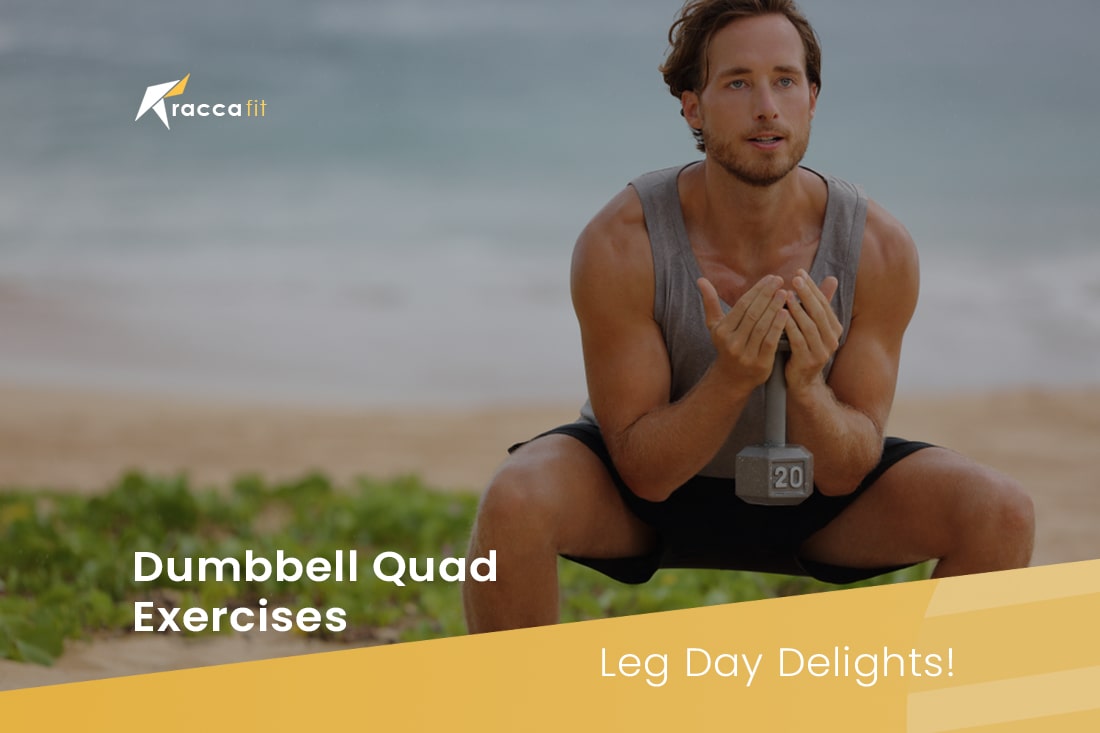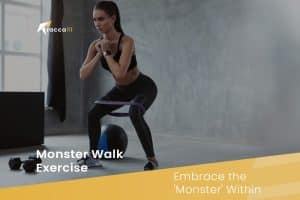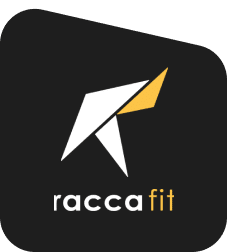The quest for strong and sculpted legs is a common fitness goal for many individuals. Whether you’re an athlete looking to improve your performance or someone who wants to feel more confident in shorts, working on your quadriceps is essential. In this article, we will explore the world of dumbbell quad exercises, providing you with valuable insights, tips, and a workout routine that will help you achieve your leg day goals.
Introduction to Dumbbell Quad Exercises
Your quadriceps, often referred to as the quads, are the large muscles on the front of your thighs. They play a pivotal role in various daily activities, including walking, running, and climbing stairs. Developing strong quads not only enhances your athletic performance but also helps with injury prevention and overall stability.
The quadriceps consist of four muscles: the vastus lateralis, vastus medialis, vastus intermedius, and rectus femoris. Together, they form a powerful muscle group responsible for extending your knee joint and assisting with hip flexion.
The Importance of Quad Muscle Strength
Strong quads are crucial for functional fitness. They provide support to the knees, help maintain balance, and contribute to proper posture. In addition, well-developed quads can alleviate pressure on the lower back, reducing the risk of back pain. Therefore, dedicating time to quad training is beneficial for everyone.
Enhancing the strength of your quadriceps can also significantly improve your performance in various sports. Athletes in sports like sprinting, cycling, and jumping rely heavily on the power generated by the quads.
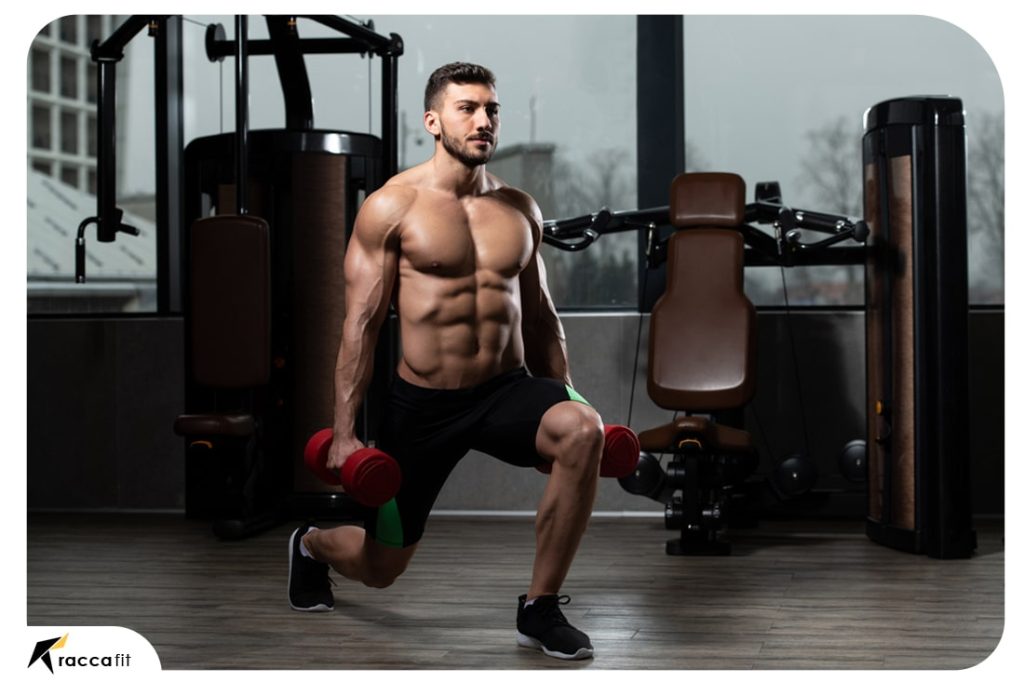
Benefits of Dumbbell Quad Exercises
Dumbbell quad workouts offer a novel and efficient technique to increase leg strength. Here are some benefits of adding them into your fitness routine:
1. Targeted Muscle Engagement
Dumbbell quad exercises specifically target the quadriceps, ensuring efficient muscle engagement and growth. The isolation of this muscle group allows for more precise training and quicker results.
2. Versatility
The adaptability of dumbbell quad workouts is one of its most significant advantages. These exercises may be done at home or at the gym, making them accessible to a wide spectrum of fitness aficionados. All you need is a set of dumbbells, which are inexpensive.
Learn More: Gluteus Minimus Exercises: Maximize Your Lower Body Strength
3. Balance and Stability
You significantly raise your stability and balance by strengthening your quads. These muscles are crucial for knee joint stabilization, which is considered necessary for a various activities spanning from walking on uneven terrain to climbing a flight of stairs.
4. Increased Range of Motion
Your lower body’s range of motion is improved with dumbbell quad workouts. For athletes, having more flexibility is essential since it can lower their chance of injury.
5. Variety
Variety is the spice of life, and it’s also key to maintaining enthusiasm for your fitness routine. Dumbbell quad exercises offer a wide range of movements, preventing boredom and helping you stay motivated.
Equipment and Safety Precautions
Before you dive into dumbbell quad exercises, it’s essential to have the right equipment and follow some safety precautions:
- Equipment: You’ll need a set of dumbbells, and the weight should be appropriate for your fitness level. Beginners may start with lighter weights, while more experienced individuals can gradually increase the load.
- Safety Precautions: Ensure your workout area is clear of obstacles, maintain proper form to prevent injury, and consult a fitness professional if you’re new to weight training. Proper form includes maintaining a straight back, keeping your core engaged, and ensuring your knees do not extend beyond your toes during exercises.
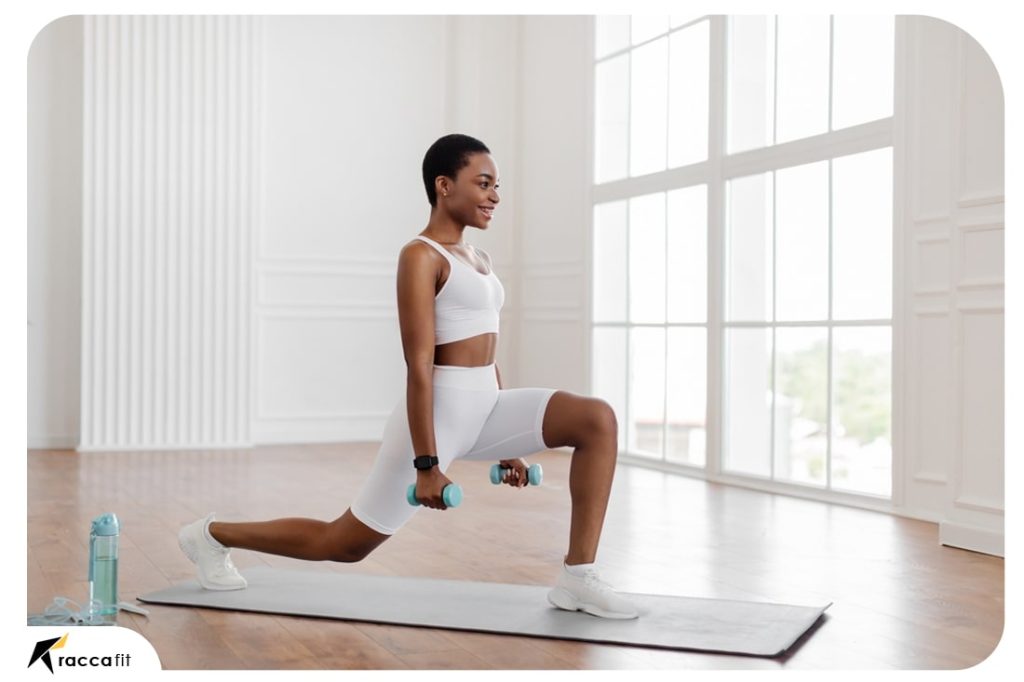
Basic Dumbbell Quad Exercises
Dumbbell Squats
Dumbbell squats are a fundamental exercise for building quad strength. Here’s how to do them:
- Stand with your feet shoulder-width apart, holding a dumbbell in each hand at your sides. The weight should be positioned to your sides, with your palms facing inward.
- Lower your body by bending your knees, keeping your back straight, and ensuring your knees do not extend past your toes. Your goal is to reach a 90-degree angle with your knees.
- Push through your heels to return to the starting position. Remember to breathe out as you exert force while rising.
Dumbbell squats engage the vastus medialis, vastus lateralis, vastus intermedius, and rectus femoris, providing a comprehensive quad workout.
Dumbbell Lunges
Follow these steps. Dumbbell lunges are excellent for targeting the quads and glutes.
- Stand with a dumbbell in each hand, palms facing your sides.
- Step forward with one leg and lower your body until both knees are bent at a 90-degree angle. Ensure that your front knee doesn’t extend past your toes, and your back knee hovers just above the floor.
- Push through your front heel to return to the starting position, then alternate legs for a complete workout.
Incorporating dumbbell lunges into your routine will not only work your quads but also challenge your balance and coordination.
Advanced Dumbbell Quad Exercises
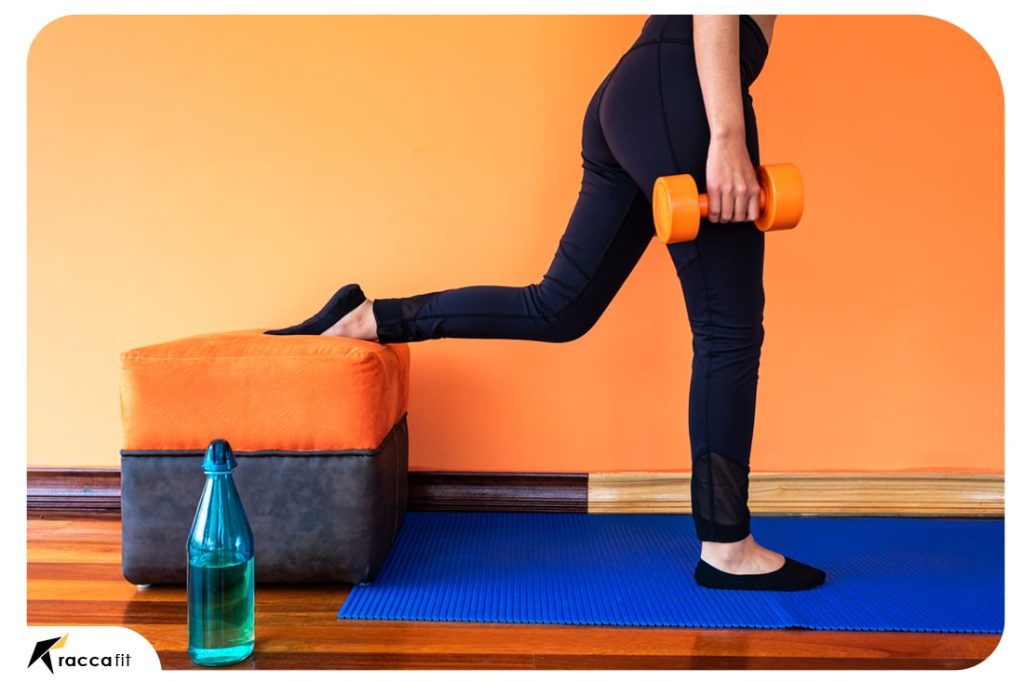
Bulgarian Split Squats
Bulgarian split squats take the intensity up a notch:
- Stand facing away from a bench with one foot resting on it, holding a dumbbell in each hand.
- Lower your body into a lunge position with your back knee almost touching the floor. Keep your front knee aligned with your ankle.
- Push through your front heel to return to the starting position. This exercise significantly targets the vastus medialis and the vastus lateralis.
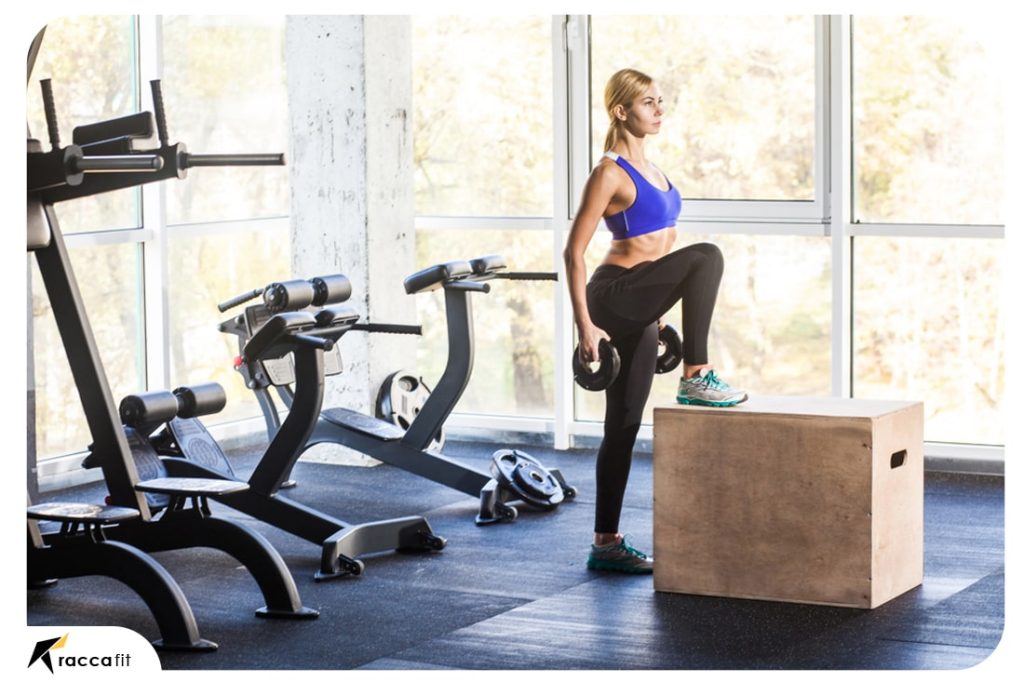
Step-Ups with Dumbbells
Step-ups are a great exercise for quad and glute development:
- Stand in front of a bench with a dumbbell in each hand.
- Step onto the bench with one foot, ensuring your entire foot is on the bench. Keep your back straight and your core engaged.
- Push through your heel to straighten your leg and return to the floor. This exercise engages the quadriceps, glutes, and hamstrings, providing an overall lower body workout.
Tips for Proper Form in Dumbbell Quad Exercises
Maintaining proper form during your dumbbell quad exercises is crucial to prevent injury and maximize results. Here are some additional tips to enhance your form:
- Breathing: Remember to breathe out as you exert force when rising during squats and lunges. Inhale as you lower your body.
- Foot Placement: Ensure your feet are hip-width apart during squats and lunges. This width promotes stability and proper alignment.
- Core Engagement: Keep your core engaged to stabilize your spine and pelvis.
- Focus on Range of Motion: Go as deep as your mobility allows while maintaining proper form. A full range of motion ensures comprehensive muscle engagement.
By following these tips, you can optimize your workout and reduce the risk of injury. Remember, consistency is key in achieving long-term results.
Learn More: High Volume Low Calorie Foods: Beat Hunger Pangs
Common Mistakes to Avoid
To get the most out of your dumbbell quad exercises, it’s important to avoid common mistakes that can hinder your progress and lead to injury. Here are some errors to watch out for:
- Rounded Back: Avoid rounding your back during exercises, as this can strain your lower back and lead to injuries.
- Excessive Weight: Don’t use excessively heavy weights that compromise your form. Proper form is more important than lifting heavy weights.
- Rushing Through Repetitions: Take your time and focus on controlled repetitions. Rushing through the exercises can lead to poor form and reduce their effectiveness.
By being aware of these mistakes and working to correct them, you’ll make your quad exercises safer and more effective.
How to Incorporate Dumbbell Quad Exercises into Your Routine
To see significant results, integrate dumbbell quad exercises into your workout routine at least twice a week. Ensure you balance them with other muscle groups to maintain overall body symmetry. If you’re new to weight training or have not worked on your quads before, consider starting with one session a week and gradually increasing the frequency as your strength improves.
For a well-rounded leg workout, pair quad exercises with those targeting the hamstrings, calves, and glutes. This balance not only helps with aesthetics but also promotes overall leg strength and balance. We can also help you to build a workout plan tailored to your goals, preferences, schedule, and available equipment in this page.
Combining Dumbbell Quad Exercises with Other Workouts
Incorporating dumbbell quad exercises into a comprehensive leg workout is an effective strategy. Here’s how you can combine these exercises with other workouts to create a balanced routine:
- Squats and Deadlifts: Combine dumbbell squats with deadlifts to target both the quads and the posterior chain (hamstrings, glutes, and lower back). This combination ensures that you work all the major muscle groups in your lower body.
- Calf Raises: Add calf raises to your routine to work on your calf muscles. This not only complements your leg workout but also contributes to overall lower body strength and balance.
- Cardio: Incorporate cardio activities like running, cycling, or swimming on alternate days to enhance your endurance and maintain cardiovascular health.
By mixing and matching exercises, you can design a workout plan that suits your specific goals and preferences.
Learn More: Benefits of Running: Why It’s One of the Best Forms of Exercise
Sample Dumbbell Quad Exercise Routine
Here’s a sample dumbbell quad exercise routine to get you started. Remember to adjust the weights and repetitions to match your fitness level and goals:
- Dumbbell Squats: 3 sets of 12 reps
- Dumbbell Lunges: 3 sets of 10 reps per leg
- Bulgarian Split Squats: 3 sets of 10 reps per leg
- Step-Ups with Dumbbells: 3 sets of 12 reps per leg
These exercises will provide a comprehensive quad workout and contribute to your overall leg strength.
Overcoming Plateaus and Tracking Progress
To keep making gains, change your routine every 4-6 weeks by altering the number of sets, reps, or exercises. This is known as periodization and prevents your muscles from adapting to the same routine. It’s essential to challenge your muscles with new stimuli to continue seeing progress.
To track your progress effectively, consider keeping a workout journal. Document the exercises you perform, the weight you lift, the number of sets and repetitions, and how you feel during and after the workout. This journal will help you identify trends, set new goals, and celebrate your achievements.

Nutrition and Recovery for Quad Growth
Building strong quads requires not only the right exercises but also proper nutrition and recovery. In this page we can provide a plan customized to meet your exact nutritional needs, keep an eye for any food allergies, and create a meal plan no matter the dietary requirement but here are some simple additional details to consider:
- Protein Intake: Ensure you consume enough protein to support muscle growth and recovery. Lean protein sources like chicken, fish, tofu, and legumes are excellent choices.
- Carbohydrates: Carbohydrates are essential for energy during workouts. Opt for complex carbohydrates like whole grains and fruits to fuel your training sessions.
- Hydration: Staying hydrated is crucial for muscle function and recovery. Drink an adequate amount of water throughout the day, especially before and after workouts.
- Rest: Your muscles need time to repair and grow. Ensure you get sufficient sleep, as this is when most muscle recovery occurs.
- Stretching and Mobility: Incorporate stretching and mobility exercises into your routine to prevent muscle tightness and improve flexibility.
Safety Considerations and Precautions
Always listen to your body, and if you experience pain or discomfort during any exercise, stop immediately. Consult a fitness professional if you have any concerns or questions, and consider consulting your healthcare provider before beginning any new fitness program, especially if you have underlying health issues or injuries.
Conclusion
Dumbbell quad exercises are an excellent way to build strong, well-defined legs. By incorporating these exercises into your fitness routine, you can achieve impressive results in terms of strength, stability, and aesthetics. So, grab those dumbbells, focus on proper form, and get ready to enjoy the benefits of sculpted quadriceps.
FAQs
1. Are dumbbell quad exercises suitable for beginners? Yes, they can be suitable for beginners, but it’s essential to start with lighter weights and focus on proper form to prevent injuries. As you become more experienced, you can gradually increase the weights to continue challenging your muscles.
2. How often should I perform dumbbell quad exercises? Aim for at least two sessions per week to see progress, but ensure you allow for adequate rest between workouts. Remember that rest is crucial for muscle recovery and growth.
3. Can I do these exercises at home without a gym membership? Absolutely! Dumbbell quad exercises can be performed at home with a basic set of dumbbells, making them accessible to individuals who prefer working out in the comfort of their own space.
4. Will quad exercises make my legs bulky? Quad exercises alone are unlikely to make your legs overly bulky. The extent of muscle growth depends on your overall training and nutrition plan. If you’re concerned about bulking up, you can adjust your training program and diet accordingly.
5. Can I use alternative equipment if I don’t have dumbbells? Yes, you can use resistance bands, kettlebells, or other weighted objects as alternatives to dumbbells for these exercises. The key is to provide resistance to your muscles, and these alternative tools can be equally effective.
